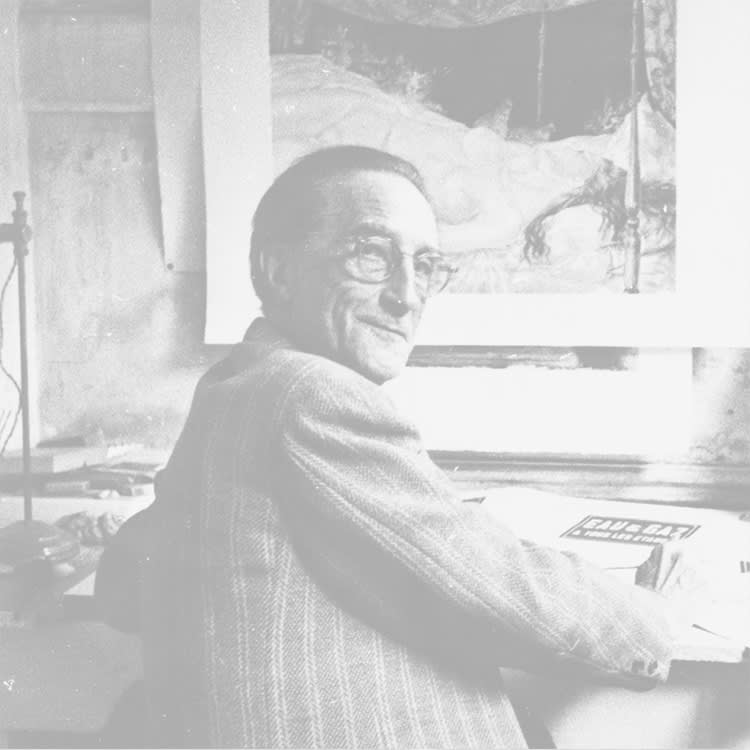MARCEL DUCHAMP 1887-1968
Marcel Duchamp is a Dadaist and Conceptual artist, whose works are exhibited at the HELENE BAILLY gallery.
Creator of the ready-made, Marcel Duchamp had an incredible career. Raised in a family of artists, Marcel Duchamp painted his first canvas at the age of ten. At the beginning of the 1900, period which saw the spread of many artistic movements amongst which Fauvism and Cubism, Marcel Duchamp settled in Paris.
Impregnated by these two movements, it seemed however, that Marcel Duchamp was closer to Cubism. He liked the way reality could be reinvented rather than represented the way it was given to see by our eyes. This drove him to the representation of his Nude descending a staircase (1912), which reminds us of the Cubist movement and its aim to represent simultaneitly various aspects. This artwork can also be linked to Futurism in the decomposition of movement and in the dynamism that arises from the artwork. This canvas had been refused from the Salon des Artistes Indépendants and harshly criticized at the 1913 Armory Show in New York. This same year, Marcel Duchamp started producing his ready-mades: ordinary objects, which he raised to the rank of artistic object by his own will. He produced Roue de bicyclette in 1913 and Porte Bouteilles in 1914 as well as his most renowned: Fountain in 1917.
Starting from the 1920's, while sharing his time between France and the United States where he settled, Marcel Duchamp tried on cinematographic experiences with Anemic Cinema in 1926, which he signed with his fictive feminine name Rrose Selavy. His artistic production became less and less important from the 1930's onward. It is in 1950, thanks to Robert Rauschenberg, that his work is rediscovered. In 1963, an important retrospective was dedicated to him at the Pasadena Museum of Arts, highlighting the importance he had in the evolution of art and its definition during the 20th century.


